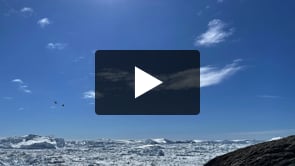Category: Nature & Geography, Natural Features
Item 1165
Contributed by: Maine Historical Society Date: circa 1900 Location: Fort Kent Media: Photographic print
Item 6169
Contributed by: Fryeburg Historical Society Date: 1943 Location: Fryeburg Media: Photographic print
Exhibit
MY ISLAND HOME: Verlie Colby Greenleaf of Westport Island
Verlie Greenleaf (1891-1992) bore witness to over a century of Westport Island's history. Many changes occurred during Verlie's 100-year life. Verlie Greenleaf donated photographs, personal notes, and sat for an interview in 1987, all part of the Westport Island History Committee's collection. Her words frame this exhibition, providing a first-person account of her life.
Exhibit
Maine's frozen rivers and lakes provided an economic opportunity. The state shipped thousands of tons of ice to ports along the East Coast and to the West Indies that workers had cut and packed in sawdust for shipment or later use.
Site Page
Mount Desert Island: Shaped by Nature - Postscript: More Moving Buildings
"Postscript: More Moving Buildings The Old House, Harbor Cottage, The Big Barn and the Old Ell were not the only structures in Asticou to move…"
Site Page
Mount Desert Island: Shaped by Nature - Early Performance
"Early Performance The Indian Village, Bar Harbor, ca. 1909Jesup Memorial Library Frank “Big Thunder” Loring, ca."
Story
Wabanaki-Greenland connections
by Jennifer Sapiel Neptune
Exploring cultural resiliency in this time of rapidly changing climate.
Story
Water is Music
by P Leone
Throughout her life water has played an important part
Lesson Plan
Grade Level: 6-8, 9-12, Postsecondary
Content Area: Science & Engineering, Social Studies
This lesson presents an overview of the history of the fur trade in Maine with a focus on the 17th and 18th centuries, on how fashion influenced that trade, and how that trade impacted Indigenous peoples and the environment.
Lesson Plan
Maine Monochromatic Oceanscape
Grade Level: 6-8
Content Area: Visual & Performing Arts
This lesson plan will give students an overview of the creatures that live in the Gulf of Maine, real and imagined. Students will be able to describe the creatures they learn about, first learning simple art skills, and then combining these simple skills to make an Oceanscape picture that is complex.
















